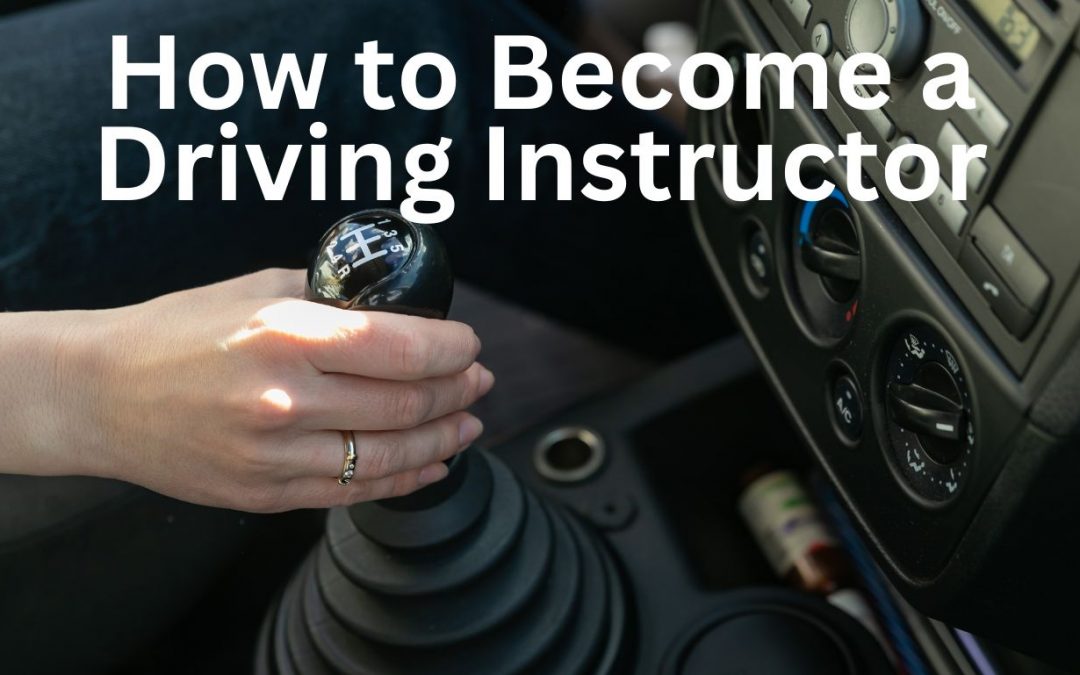Introduction:
Embarking on the journey to become a driving instructor is a transformative venture that transcends the mere mechanics of operating a vehicle. It’s a calling for those passionate about shaping responsible, confident drivers. In this comprehensive guide, we unravel the intricate steps, from understanding the prerequisites to mastering the art of instruction. Whether you’re fueled by a desire to share your road wisdom or considering a career pivot, join us as we navigate the lanes of becoming a driving instructor – a role that goes beyond the driver’s seat to cultivate safe, skilled road enthusiasts.
1-The Path to Become an Instructor in Driving:
Being Aware of the Needs:
Starting your journey requires knowing exactly what is expected of you. The first three prerequisites are being of legal age as established by your local licensing authority, obtaining a valid driver’s license, and maintaining a spotless driving record.
Education History and Proficiency:
It takes more than just driving; a certain set of abilities is needed for effective instruction. Even though a high school degree is frequently the prerequisite, developing extraordinary communication skills, tolerance, and a sincere love of teaching are just as important. Consider additional courses or workshops to refine these essential qualities.
2. Picking the Appropriate Training Course
Driver Education Programs with Accreditation
The next step would be to enroll in a recognized driving instructor training course. Make sure the courses you choose address both the theoretical and practical facets of driver education by looking for ones that are approved by the licensing body in your area.
Practical Training and In-Car Experience
Practical training, including in-car instruction, is a fundamental part of your journey. Look for courses that give you practical experience so you can hone your abilities under the direction of knowledgeable teachers.
3. Navigating the Licensing Process
How to Apply for a License to Teach Driving
Applying for a driving instructor license is the next step after finishing your training course. Usually, this procedure entails submitting your credentials, clearing background checks, and occasionally taking written tests.
Practical and Theoretical Examinations
Be prepared to demonstrate your driving skills and knowledge through practical and theoretical examinations. These tests assess your ability to instruct, communicate effectively, and impart crucial driving knowledge to learners.
4. Building Your Instructional Skills
Effective Communication in Driver Education
Effective instruction is fundamentally based on communication. Gain the ability to communicate ideas clearly, modify your approach to fit the needs of various students, and offer helpful criticism.
Gaining Adaptability and Patience
A virtue in the field of driver education is patience. Recognize each student’s individual needs and learning preferences to establish a warm and supportive learning environment.
5. Acquiring Real-World Experience
Supervised Teaching and Mentorship
Before going solo, gain practical experience through supervised teaching and mentorship programs. Working alongside experienced instructors provides valuable insights and hones your teaching skills.
Refining Your Teaching Techniques
Continuous improvement is key. Reflect on your teaching experiences, seek feedback, and engage in professional development to refine your techniques and stay abreast of changes in road regulations.
6. Understanding the Business Side
Setting Up Your Driving School
If you aspire to establish your driving school, familiarize yourself with the legal and business requirements. This may include obtaining the necessary permits, securing a suitable location, and investing in quality instructional materials.
Marketing Yourself as an Instructor
Building a client base requires effective marketing. Utilize online platforms, social media, and traditional advertising methods to showcase your expertise and attract potential students.
FAQ’s
1. What qualifications do I need to teach driving?
Simple! a high school diploma, a current driver’s license, and a spotless driving record. Furthermore, don’t forget to buckle up for an accredited driving instructor training program.
2. What is the duration of training to become a driving instructor?
Buckle in for a few months. You’ve got the training program, practical experience, and those licenses to tackle. It’s a journey, not a joyride!
3. Can I do this part-time?
Absolutely! You can juggle teaching with other adventures. Just be patient – building your student squad might take a bit.
4. What challenges do driving instructors face?
Think of it like driving through traffic – different styles, nervous vibes, and staying sharp on the rules. It’s a skillful blend of patience and adaptability.
5. Is there a demand for driving instructors?
You bet! Busy areas and new drivers keep the demand rolling. Check your local vibes to see if it’s green lights for you.
Conclusion:
The profession of driving instruction is demanding and calls for knowledge, dedication, and a genuine desire to produce responsible drivers. It’s important to keep in mind that providing individuals with the information and confidence they need to drive sensibly and safely for the rest of their lives goes beyond simply teaching them how to drive. As you progress through the academic requirements, practical experiences, and business-related components, this will become evident. Whether you are considering a career change or are just entering the workforce, teaching driving is a fulfilling career path with lots of chances to make a positive impact on the lives of those you instruct. I hope your road to becoming a driving instructor is safe!



